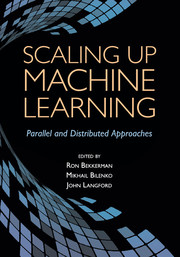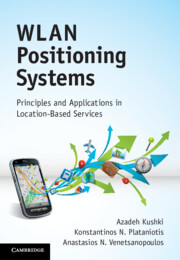Refine search
Actions for selected content:
1983 results in Distributed, Networked and Mobile Computing
Acknowledgements
-
- Book:
- Understanding Weightless
- Published online:
- 05 April 2012
- Print publication:
- 22 March 2012, pp xii-xii
-
- Chapter
- Export citation
3 - Working in white space spectrum
-
- Book:
- Understanding Weightless
- Published online:
- 05 April 2012
- Print publication:
- 22 March 2012, pp 20-47
-
- Chapter
- Export citation
Glossary
-
- Book:
- Understanding Weightless
- Published online:
- 05 April 2012
- Print publication:
- 22 March 2012, pp 199-201
-
- Chapter
- Export citation
Index
-
- Book:
- Understanding Weightless
- Published online:
- 05 April 2012
- Print publication:
- 22 March 2012, pp 202-205
-
- Chapter
- Export citation
2 - The need for a new standard
-
- Book:
- Understanding Weightless
- Published online:
- 05 April 2012
- Print publication:
- 22 March 2012, pp 10-19
-
- Chapter
- Export citation
5 - The network
-
- Book:
- Understanding Weightless
- Published online:
- 05 April 2012
- Print publication:
- 22 March 2012, pp 57-73
-
- Chapter
- Export citation
4 - Weightless in overview
-
- Book:
- Understanding Weightless
- Published online:
- 05 April 2012
- Print publication:
- 22 March 2012, pp 48-56
-
- Chapter
- Export citation

Scaling up Machine Learning
- Parallel and Distributed Approaches
-
- Published online:
- 05 February 2012
- Print publication:
- 30 December 2011

WLAN Positioning Systems
- Principles and Applications in Location-Based Services
-
- Published online:
- 05 February 2012
- Print publication:
- 26 January 2012
References
-
- Book:
- WLAN Positioning Systems
- Published online:
- 05 February 2012
- Print publication:
- 26 January 2012, pp 141-146
-
- Chapter
- Export citation
Frontmatter
-
- Book:
- WLAN Positioning Systems
- Published online:
- 05 February 2012
- Print publication:
- 26 January 2012, pp i-vi
-
- Chapter
- Export citation
Part II - Signal processing theory
-
- Book:
- WLAN Positioning Systems
- Published online:
- 05 February 2012
- Print publication:
- 26 January 2012, pp 53-54
-
- Chapter
- Export citation
Preface
-
- Book:
- WLAN Positioning Systems
- Published online:
- 05 February 2012
- Print publication:
- 26 January 2012, pp xi-xii
-
- Chapter
- Export citation
4 - Positioning systems
- from Part I - History and applications
-
- Book:
- WLAN Positioning Systems
- Published online:
- 05 February 2012
- Print publication:
- 26 January 2012, pp 42-52
-
- Chapter
- Export citation
9 - System design considerations
- from Part II - Signal processing theory
-
- Book:
- WLAN Positioning Systems
- Published online:
- 05 February 2012
- Print publication:
- 26 January 2012, pp 127-135
-
- Chapter
- Export citation
5 - Positioning in wireless local area networks
- from Part II - Signal processing theory
-
- Book:
- WLAN Positioning Systems
- Published online:
- 05 February 2012
- Print publication:
- 26 January 2012, pp 55-67
-
- Chapter
- Export citation
Contents
-
- Book:
- WLAN Positioning Systems
- Published online:
- 05 February 2012
- Print publication:
- 26 January 2012, pp vii-x
-
- Chapter
- Export citation
6 - Memoryless positioning
- from Part II - Signal processing theory
-
- Book:
- WLAN Positioning Systems
- Published online:
- 05 February 2012
- Print publication:
- 26 January 2012, pp 68-91
-
- Chapter
- Export citation
8 - Sensor selection
- from Part II - Signal processing theory
-
- Book:
- WLAN Positioning Systems
- Published online:
- 05 February 2012
- Print publication:
- 26 January 2012, pp 113-126
-
- Chapter
- Export citation
7 - Model-based positioning
- from Part II - Signal processing theory
-
- Book:
- WLAN Positioning Systems
- Published online:
- 05 February 2012
- Print publication:
- 26 January 2012, pp 92-112
-
- Chapter
- Export citation
